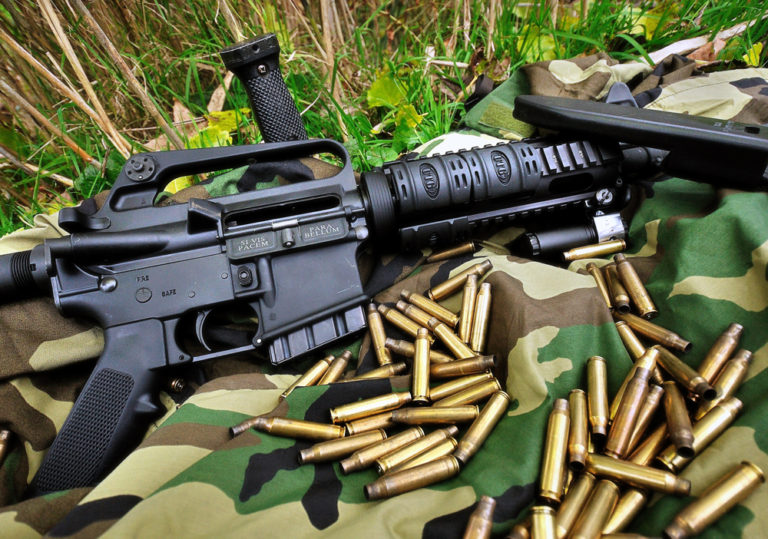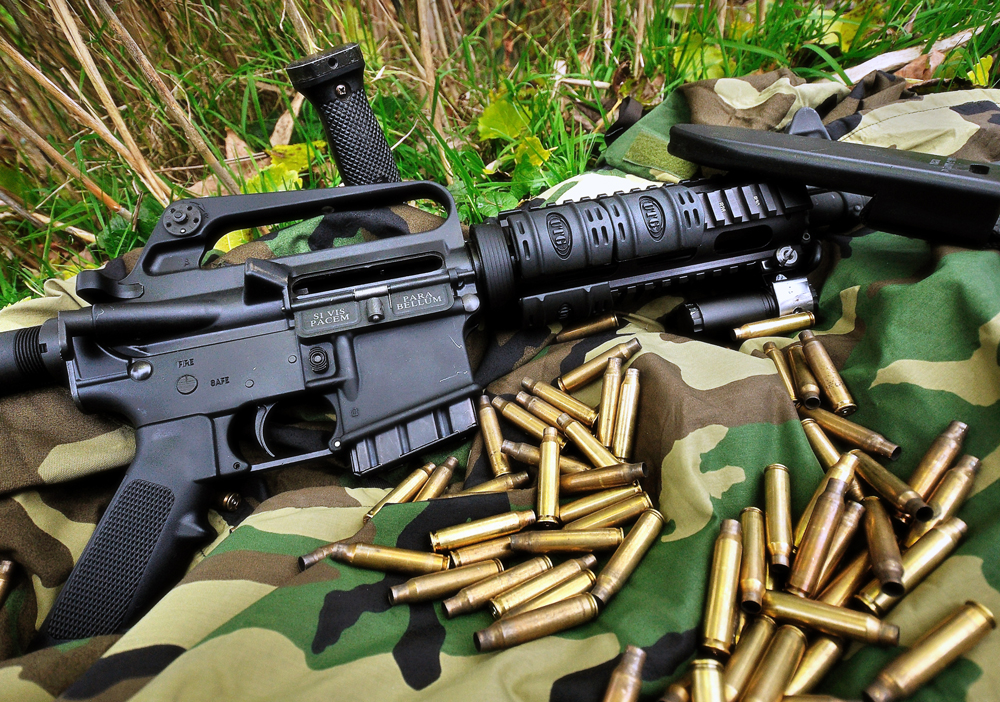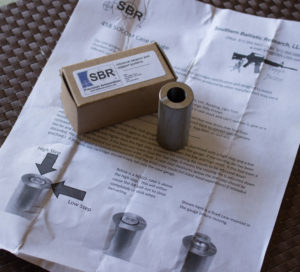

Given the characteristics of the rifle, reloading AR cartridges requires some special considerations compared to other firearms to keep them safe and accurate.
Reloading for the AR cartridges requires a certain level of attention to details, to ensure that your handloads function properly through the AR action.
My own experiences with MSRs are rather limited (I live in Upstate New York, where fun is illegal), but it was my first handloading experience for a Colt AR in .223/5.56mm that really opened my eyes as to what could go wrong.
My buddy Josh Coon had a sweet Colt HBAR II, which (for reasons we couldn’t quite figure out) wasn’t shooting anywhere near where it should’ve been. It functioned fine, but the accuracy was mediocre at best.
So, I loaded him up some handloads; you know, carefully weighing the powder charges, using match bullets, hand seating the primers. You can imagine my surprise when the gun jammed on almost every shot. Um, what?!?
I had full-length resized the once-fired cases, and taken my time during the entire reloading process, so what the hell happened? Bottom line was that the full length resizing die didn’t resize enough of the rear portion of the case to feed properly in the Colt action.
What I needed came soon after: a set of small base resizing dies. These dies resize the case almost all the way down the case body, and ensure that the cartridge will chamber correctly. I also picked up a Southern Ballistic Research case gauge, which helped immensely.
The gauge will let you know which cases won’t chamber, which cases will chamber well, and those cases that have shoulder issues and may give headspacing issues. This little tool is a very worthwhile investment.
Once the resizing issue was corrected, we moved on to correcting the accuracy issue, and soon enough the rifle was shooting the way we expected it to.
Another issue that can rear its ugly head is the problem with bullet tension. Most military ammunition features a bullet with a cannelure, which is crimped into place. This crimp prevents the bullet from moving forward, within the case, upon being slammed into the chamber.

That is all well and good when you have a bullet with a cannelure, but should you choose to use a bullet without one, the crimp is out of the question. Therefore we have a situation where the AR action acts like an inertia hammer, and may pull that bullet out of the case as much as 0.007 of an inch.Not a big deal for plinking purposes, but in the accuracy department that could make things go awry.
A good set of Redding Competition dies can help keep those projectiles in place, whether we’re talking 5.56mm, 6.5 Grendel or 6.8 SPC. The Redding resizing die in this set requires that you measure the outside dimension of a loaded cartridge, and then they have a corresponding bushing that will work with your brass.
You see, these bushings work like this: some brass has thicker case dimensions than others, and a standard resizing die will ‘over-shrink’ the thicker brass before running it back down over the slightly-less-than-caliber-sized expander ball. The brass is ‘over-shrunk’ will have a spring effect that can affect concentricity.
Shrink that brass down, but no more than you need to, and you’ll have not only better neck concentricity, but you’ll get better neck tension, which in turn, will help prevent the bullets from changing their seating depth when slammed into the AR chamber.
Keeping these ideas in mind, you can keep your MSR well-fed, and accurate as it ever will be.

Next Step: Get your FREE Printable Target Pack
Enhance your shooting precision with our 62 MOA Targets, perfect for rifles and handguns. Crafted in collaboration with Storm Tactical for accuracy and versatility.
Subscribe to the Gun Digest email newsletter and get your downloadable target pack sent straight to your inbox. Stay updated with the latest firearms info in the industry.

![Best Concealed Carry Guns In 2025 [Field Tested] Wilson Combat EDC X9S 1](https://gundigest.com/wp-content/uploads/Wilson-Combat-EDC-X9S-1-324x160.jpg)


![Best 9mm Carbine: Affordable PCCs [Tested] Ruger Carbine Shooting](https://gundigest.com/wp-content/uploads/Ruger-Carbine-Shooting-100x70.jpg)
![Best AR-15: Top Options Available Today [Field Tested] Harrington and Richardson PSA XM177E2 feature](https://gundigest.com/wp-content/uploads/Harrington-and-Richardson-PSA-XM177E2-feature-100x70.jpg)

“A good set of Redding Competition dies can help keep those projectiles in place, ” So can the Hornady match grade dies.